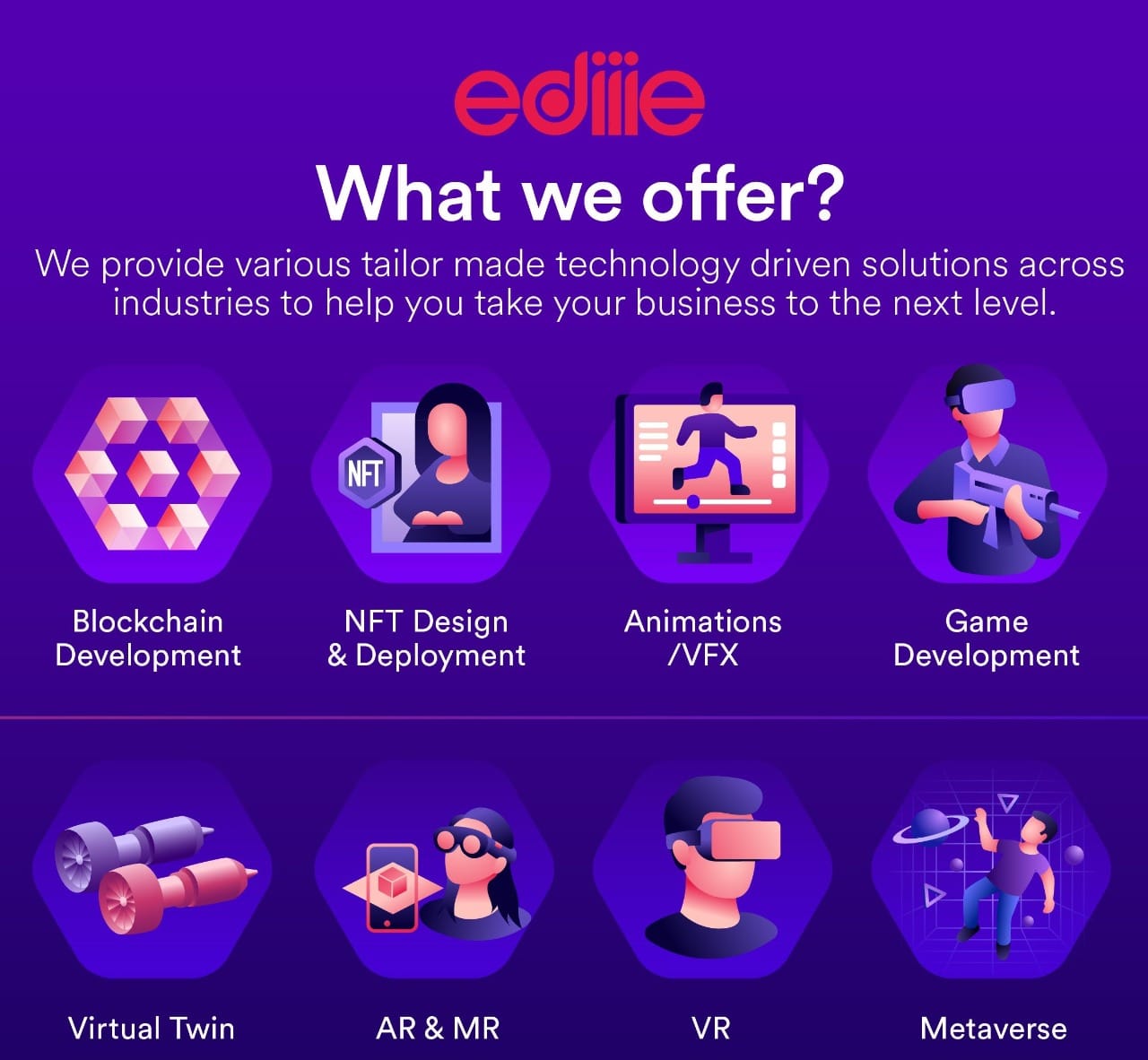NFT staking - the fantastic opportunity to earn more
Everyone loves the phrase "more money," and NFT has many revenue-generating options. NFT staking is one such chance.
Since the development of NFTs, technology has undergone a continuous change. There is little space for dispute that the development of NFTs marks the beginning of a brand-new, exciting era in which a user has numerous lucrative opportunities to earn.
- The NFT market is currently worth 2.6 billion dollars, but by 2032 it is anticipated to develop at a 36.0% CAGR and reach 41.6 billion dollars.
These priceless non-fungible tokens have great value in the form of JPEGs, artwork, event tickets, and more.
There is, however, a lot more to offer.
Users in a variety of collections can stake NFTs to earn rewards. Additionally, there exist platforms for NFT staking, which enables both NFT holders and non-holders to profit from these digital assets.
Let us decode the meaning and benefit of NFT staking.
Decrypting NFT staking
The act of holding an NFT asset on a network built by a blockchain development company for a predetermined period of time is known as NFT staking. Without selling the asset, the owner of an NFT asset can receive rewards in the form of bitcoin.
In layman's Language- It is similar to keeping your money in a fixed deposit, against which you earn interest. While in NFT staking, instead of saving money into the bank, you keep your NFT in blockchain and earn rewards.
Depending on the platform, different rules apply for keeping the NFT in Blockchain lockup. While some NFTs have strict time restrictions that must be met before the user can un-stake their NFT, other NFTs let the user keep their NFT indefinitely.
Some services compensate users for staking NFT from projects and Blockchain in addition to offering them a token.
A smart contract is used to stake NFT in a liquidity pool when transmitted to a decentralized financial platform. The protocol system determines the incentives that depositors receive. Rewards could be given in the token of the decentralized financial platform or another NFT.
How NFT staking works
Because NFTs are tokenized assets, staking them is the same as staking bitcoins. Furthermore, unlike tokens, not all non-fungible tokens for NFTs can be staked. NFTs are tokenized assets that may be deployed and secured through NFT staking platforms. This is made possible using a smart contract on the applicable Blockchain technology.
Although staking NFTs is still a new idea, many NFT holders are thrilled about this advancement. This is because non-fungible token holders are hesitant to sell due to the uniqueness of the token. This is a key distinction between traditional currencies and cryptocurrencies, which are simple to purchase and trade. It would be best if you had a coin to use the NFT.
To begin, check to verify if your preferred cryptocurrency wallet is compatible with the Blockchain where the NFT is located. The wallet must then be linked to the staking platform before you may send NFTs to it. This procedure is similar to staking your coins. Both can be accomplished by going to the platform's staking area.
NFT staking platform
One example is insufficient because there are so many different NFT staking systems. To assist you in understanding the distinctions in this business, we present a few NFT staking methods. This business has numerous examples due to the exponential growth of play-to-earn NFTs.
- Splinterland
Splinterlands, abbreviated as SPS, is a blockchain-based collectible card game akin to Hearthstone in which players collect and use cards with varied abilities and traits. In this scenario, Splintershards, the game's native cryptocurrency, is set up as a DAO on the Binance Smart Chain. SPS tokens can be bet on in ranked battles, liquidity pools, and the DAO governance voting pool.
- NFTX
NFTX is a platform for creating or developing NFT marketplaces for illiquid Non-Fungible Tokens (NFTs). Users deposit NFT into an NFTX vault, which generates a fungible vToken that represents a claim on a randomly selected asset from the vault. In addition, vTokens can be used to acquire an NFT from a vault.
Inventory Staking is a brand new feature added to the NFTX V2 Protocol that allows anyone to add their floor-priced NFTs to a locker and stake their position on the Stake page in exchange for a part of the vault costs. This will enable you to profit passively from your entire floor NFTs.
- Binance NFT PowerStation
Binance Fan Tokens are utility tokens associated with a certain sports team. This token provides token holders with a number of advantages. As a token holder, for example, you can obtain priority ticket sales or have a say in crucial club decisions. Binance Fan Tokens are popular among sports teams, but musicians or celebrities can also use them with a large fan base.
- MOBOX
MOBOX contains a metaverse called the MOMOverse, where you can find various NFTs. You can trade these NFTs on MOBOX's marketplace, but you can also stake them and earn a passive income. Each MOMO is unique, with its hashing power decided at random.
When you stake MOMO, you can earn the governance token from MOBOX as a staking incentive. The payoff amount is determined by the number of MOMOs staked. Because the rarity of each MOMO varies, so does the hashing power, which affects the staking payouts. MOBOX is just one example.
Conclusion
When deciding to stake your NFTs, you must have a clear goal. To locate the greatest NFTs for staking, you must first understand where the opportunities are. As a result, thorough market research is critical. You can invest in various NFTs, each with its own characteristics. As a result, ensure that your plan is crystal obvious to you.
You can also choose an industry for your NFT staking, such as gaming.
Gaming also provides a play-to-earn game built on the Ethereum blockchain, allowing users to earn extra money by staking NFTs. Always bear in mind that NFTs might lose value. Therefore, there are risks associated with staking your NFTs.
To know more about NFT staking, you can visit EDIIIE. Some of the top Technology Enthusiasts, Game Developers, AR/VR Specialists, Designers, Artists, Animators, and Subject Matter Experts in Engineering, Medical, and other industries make up our team.






